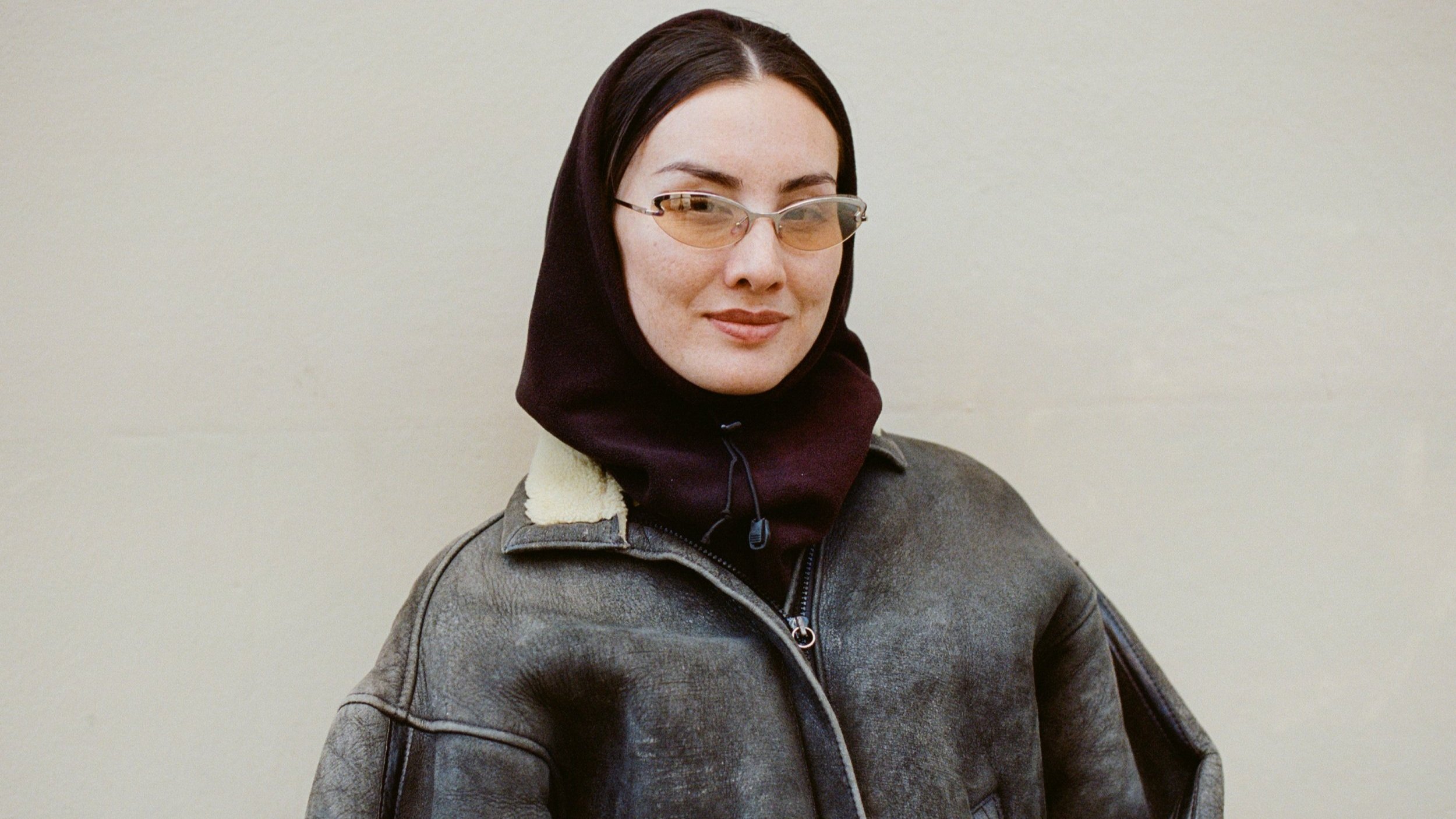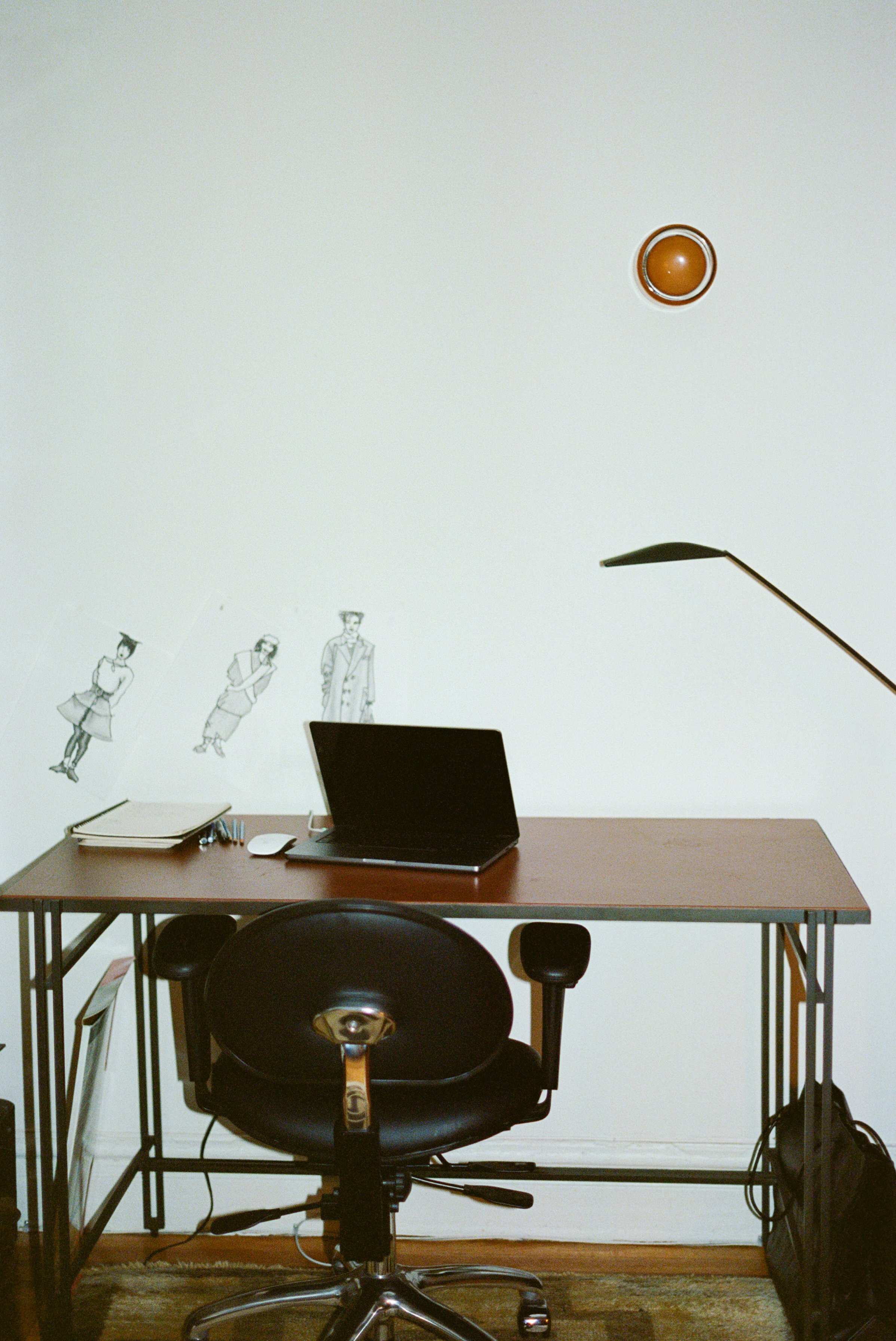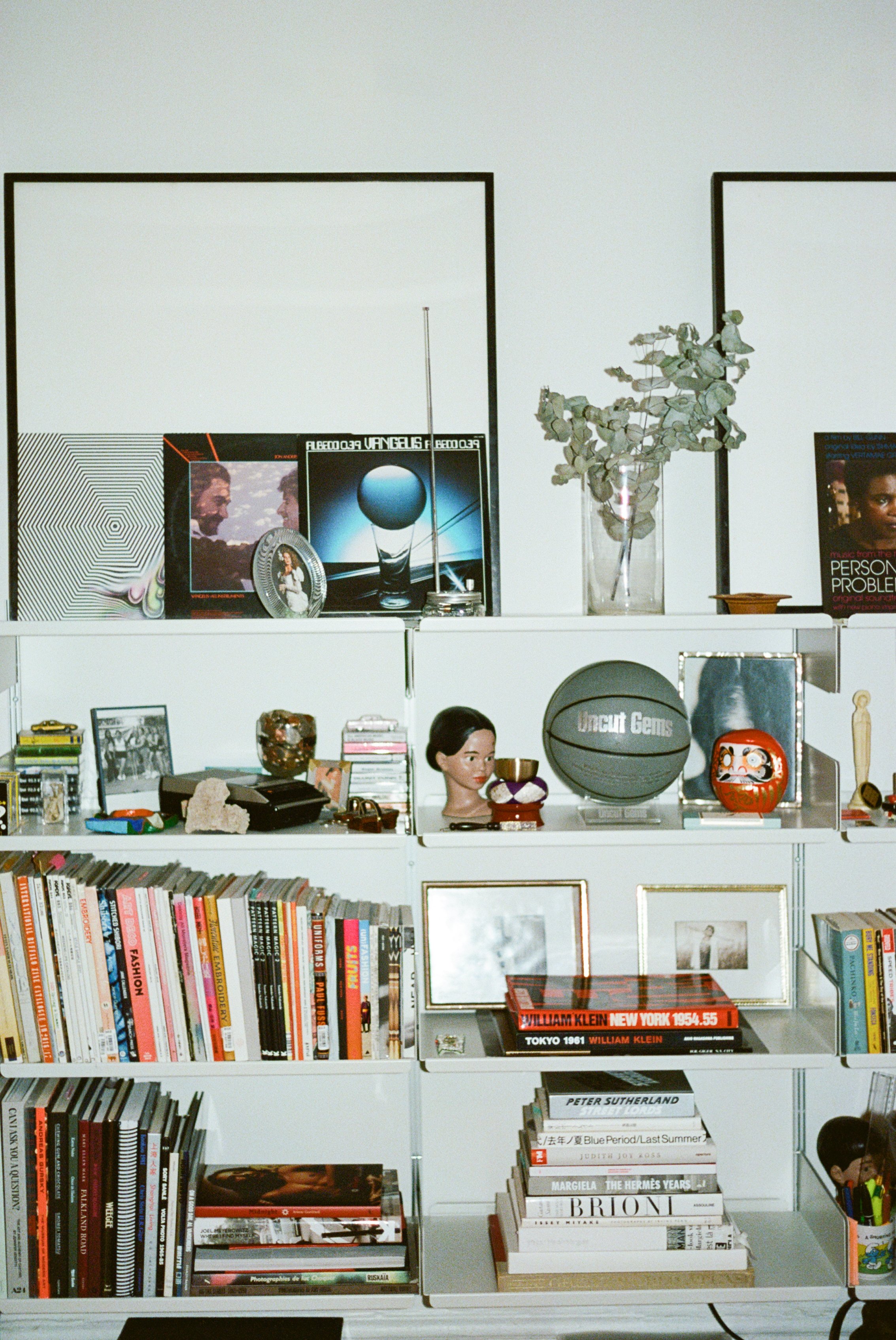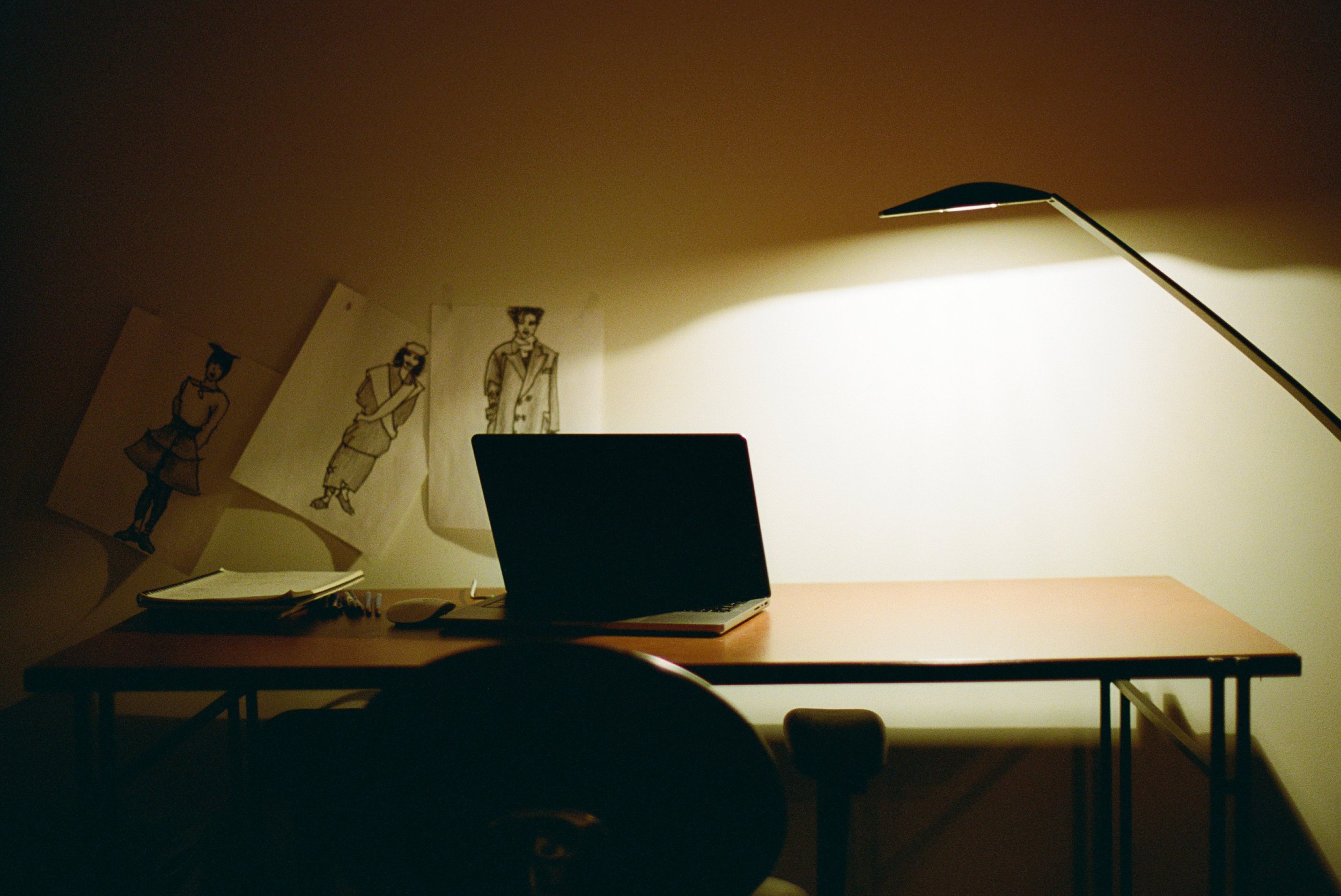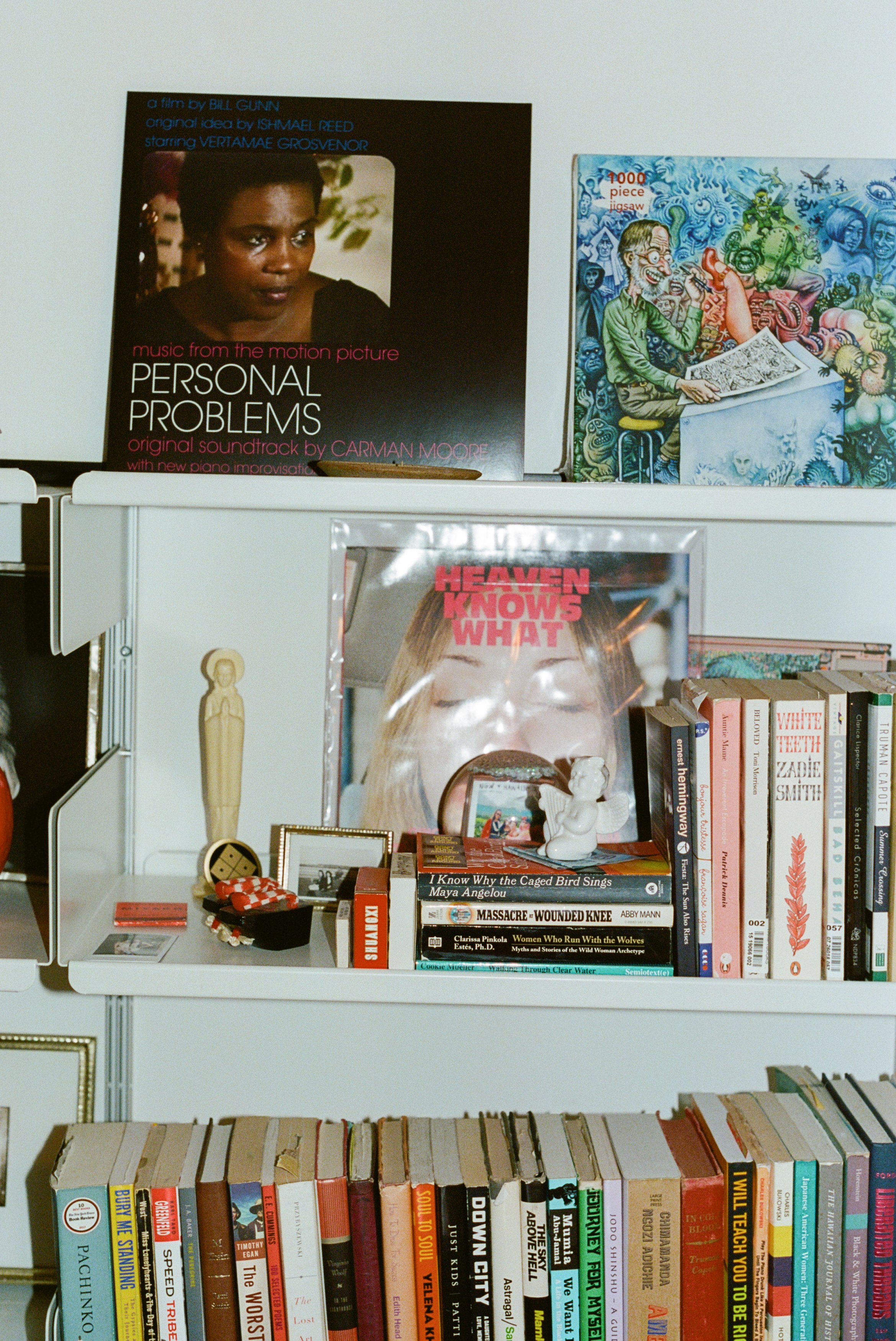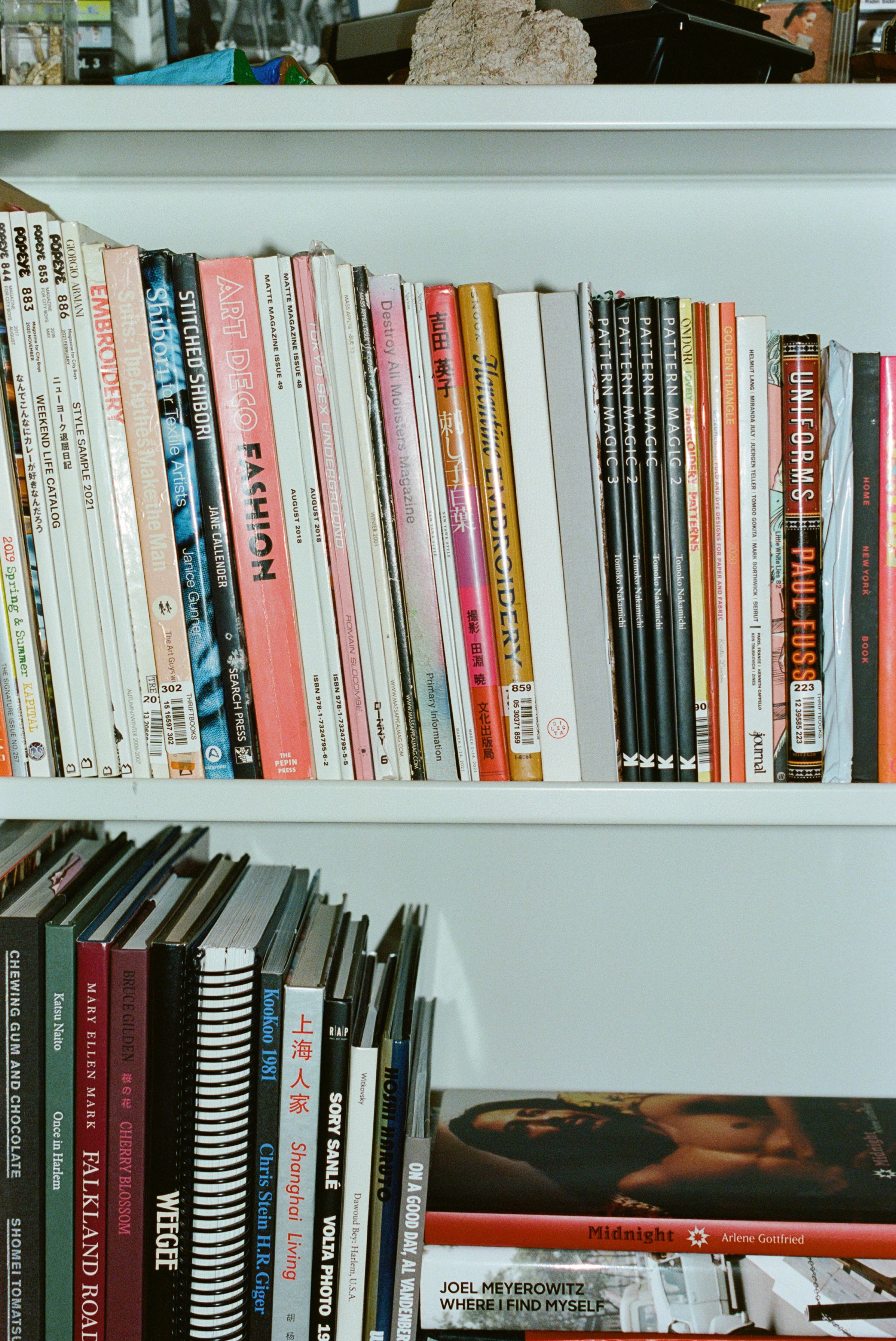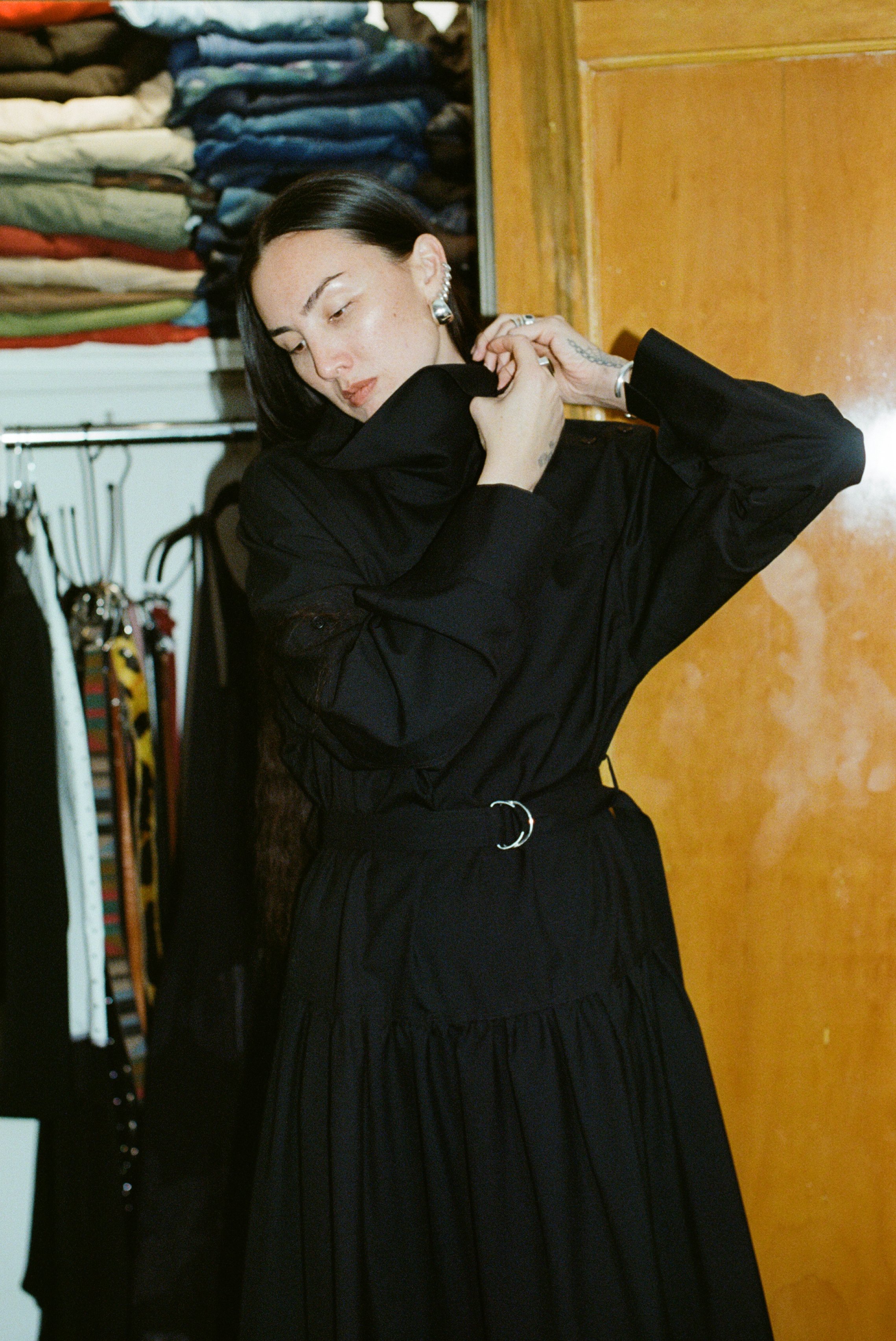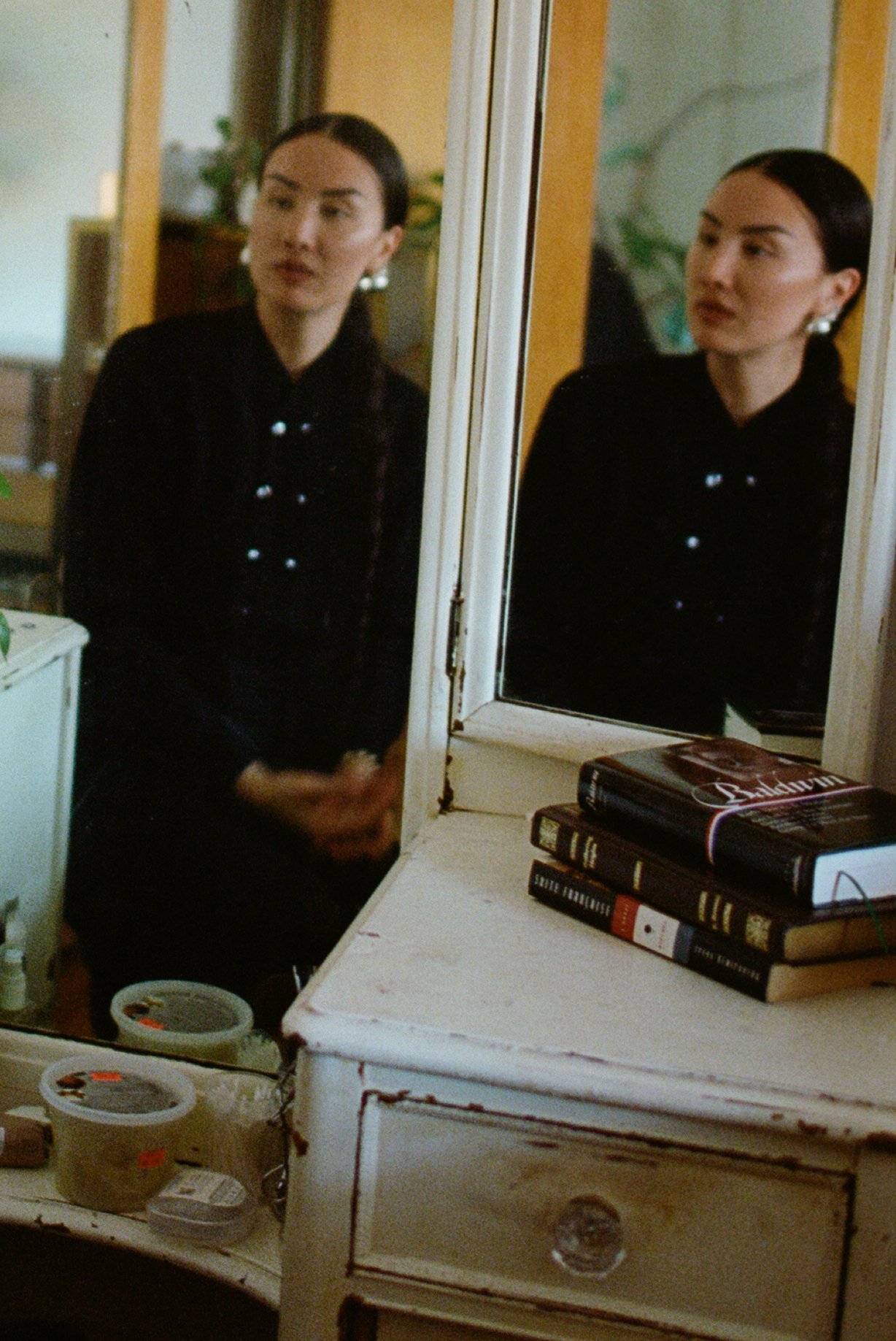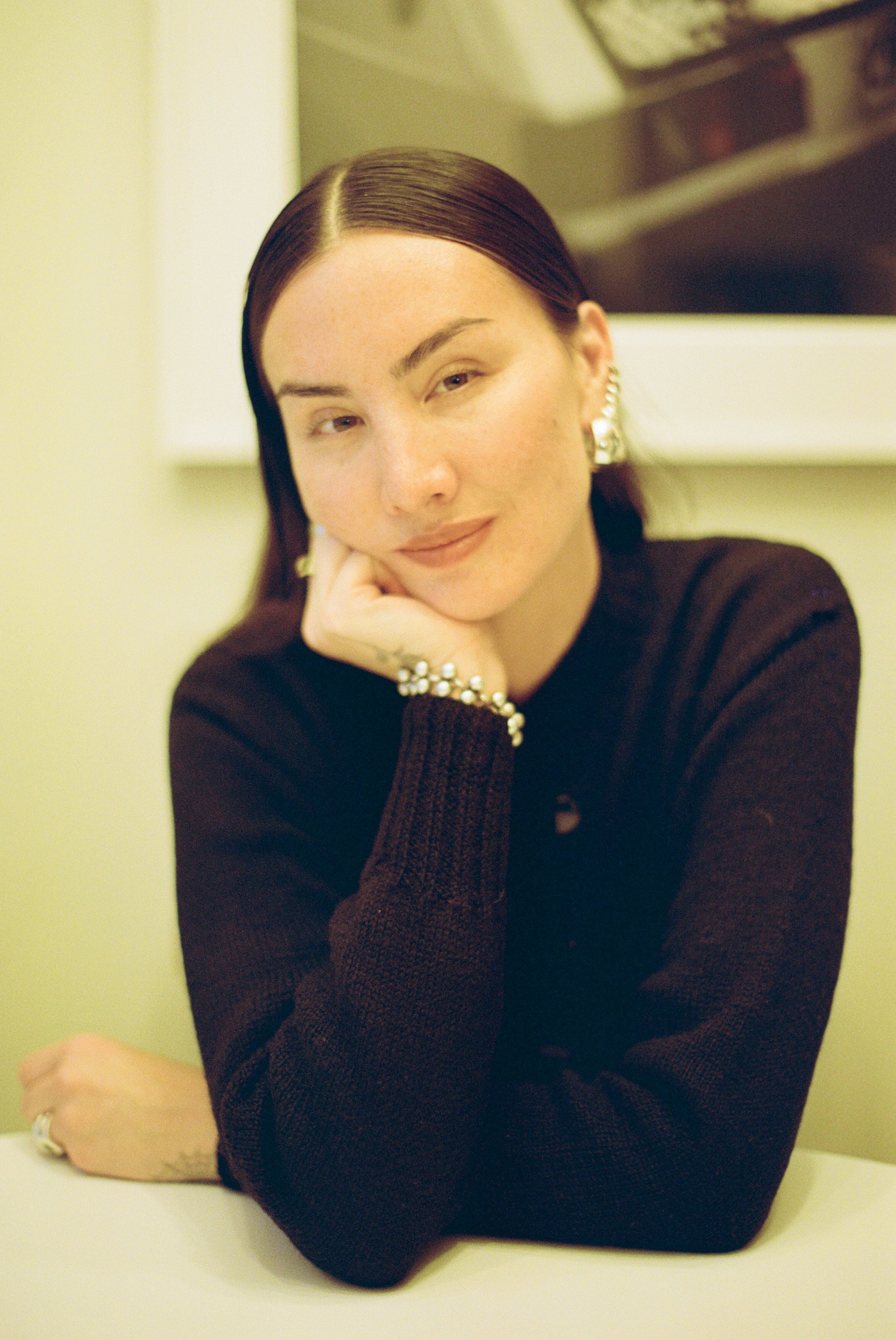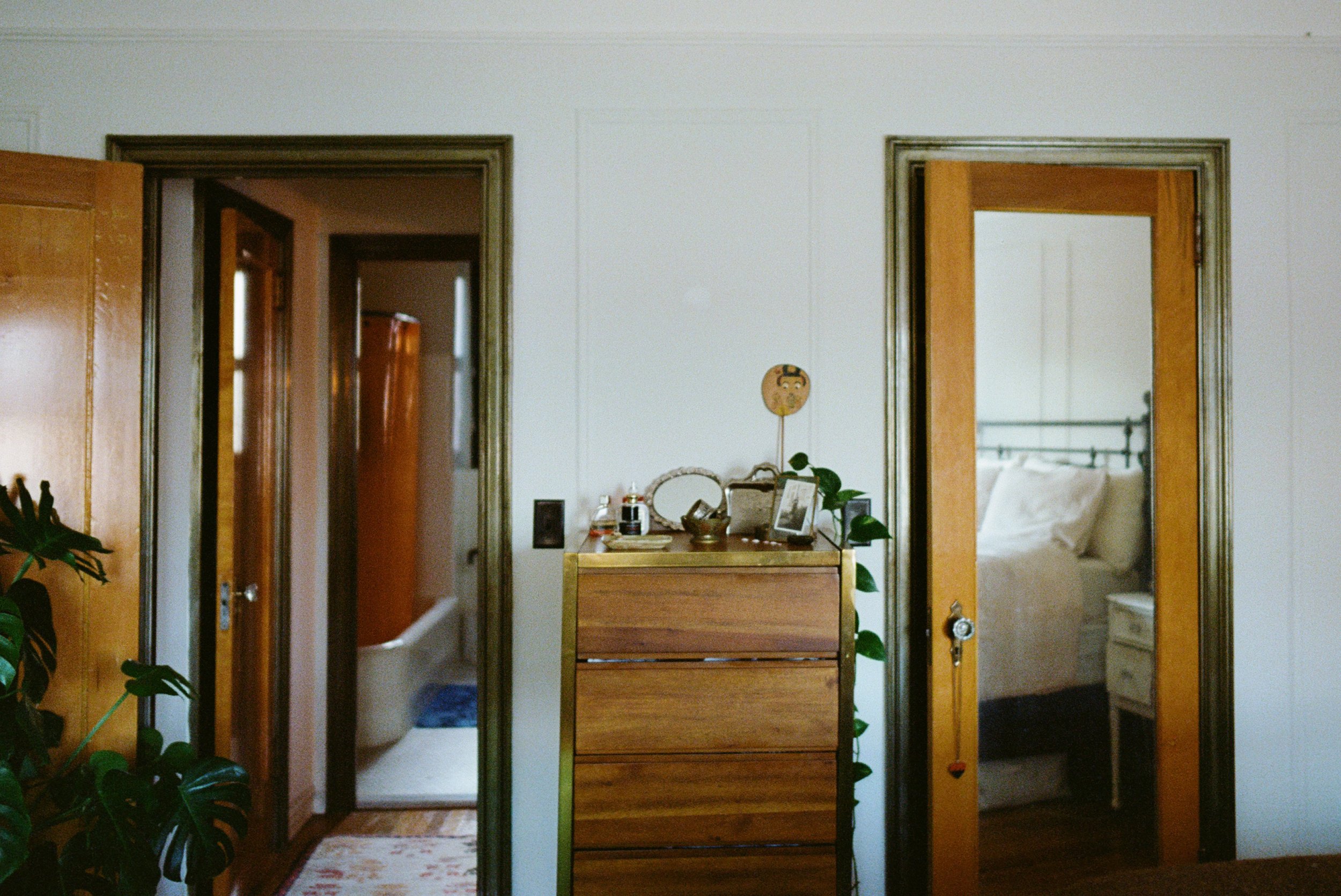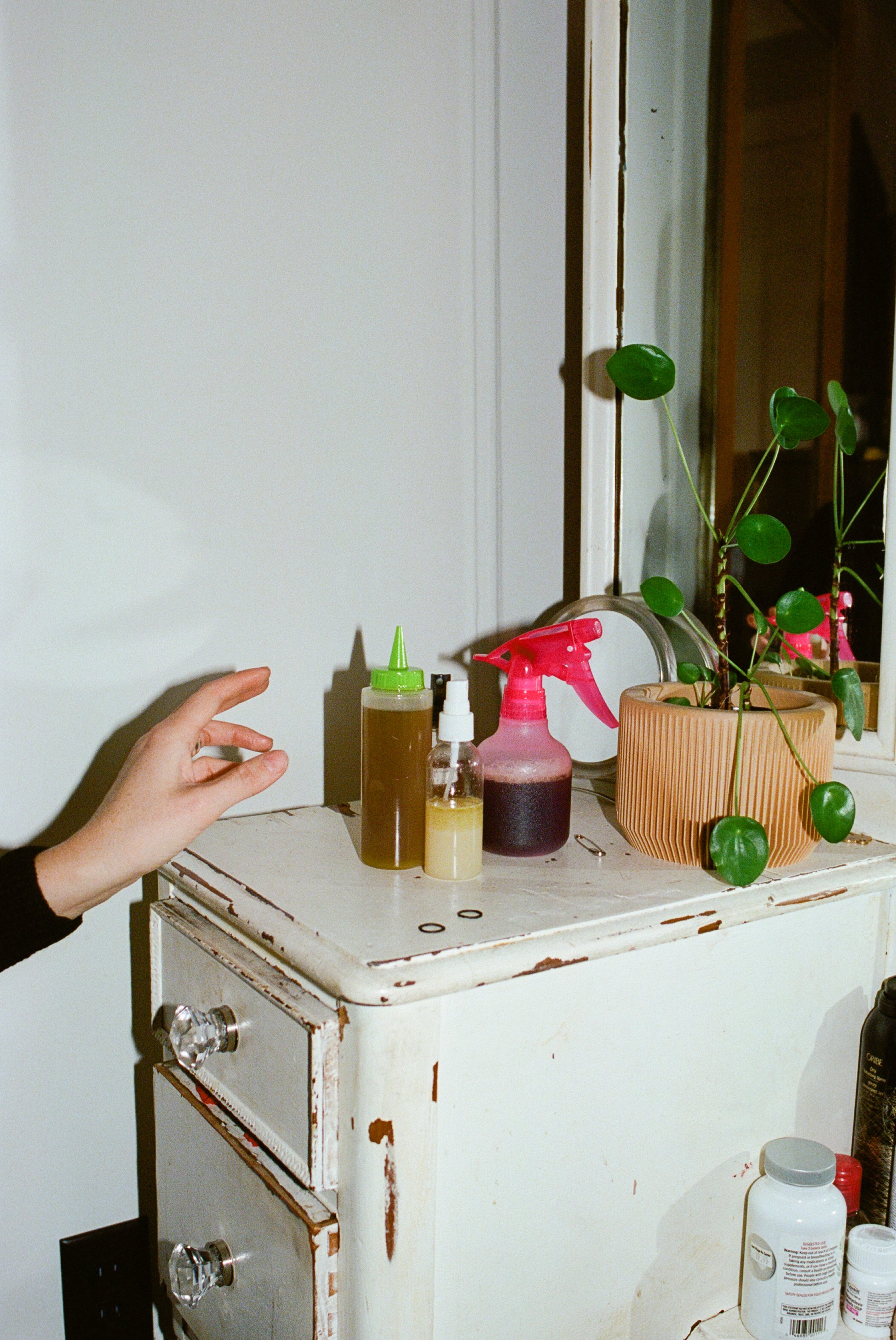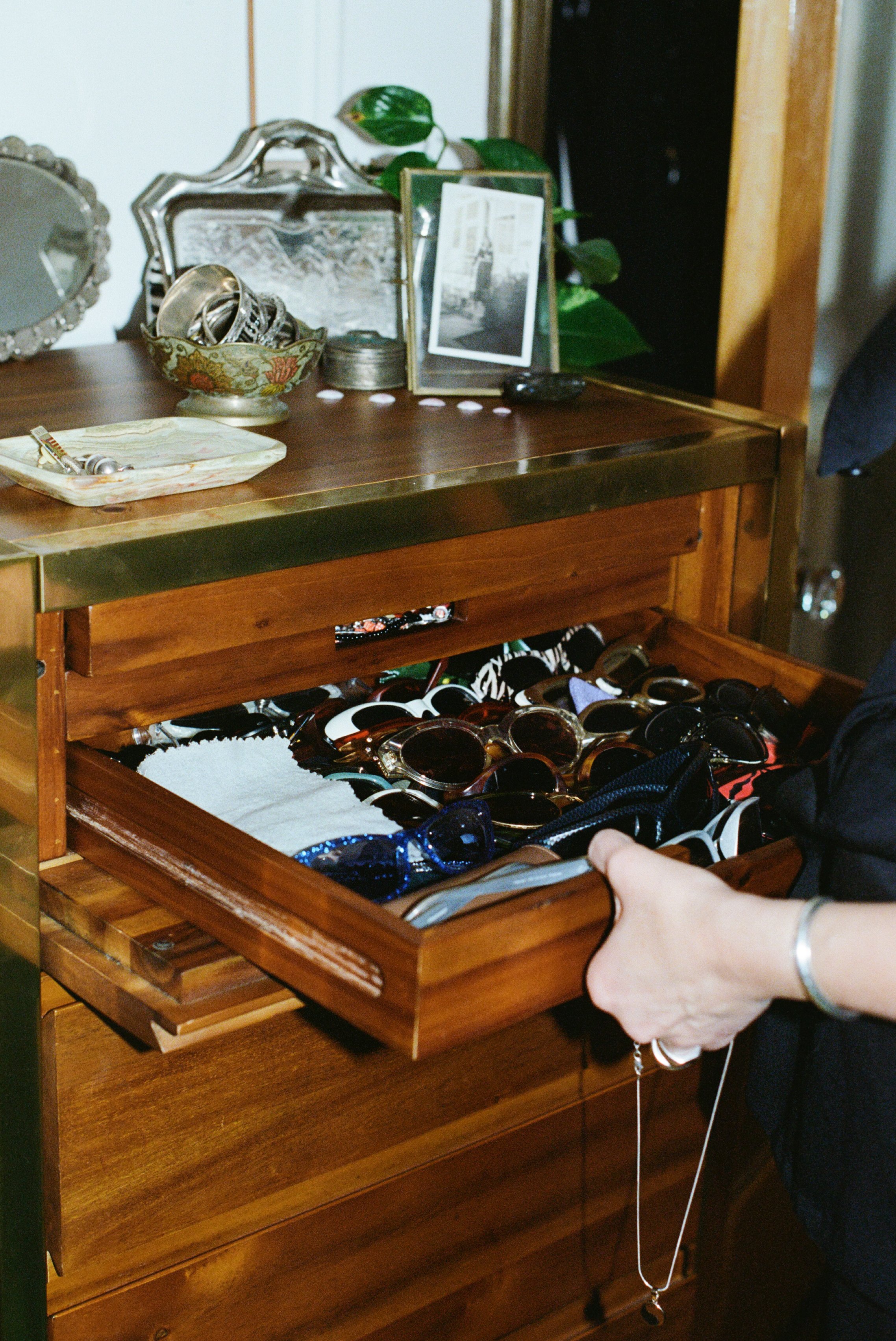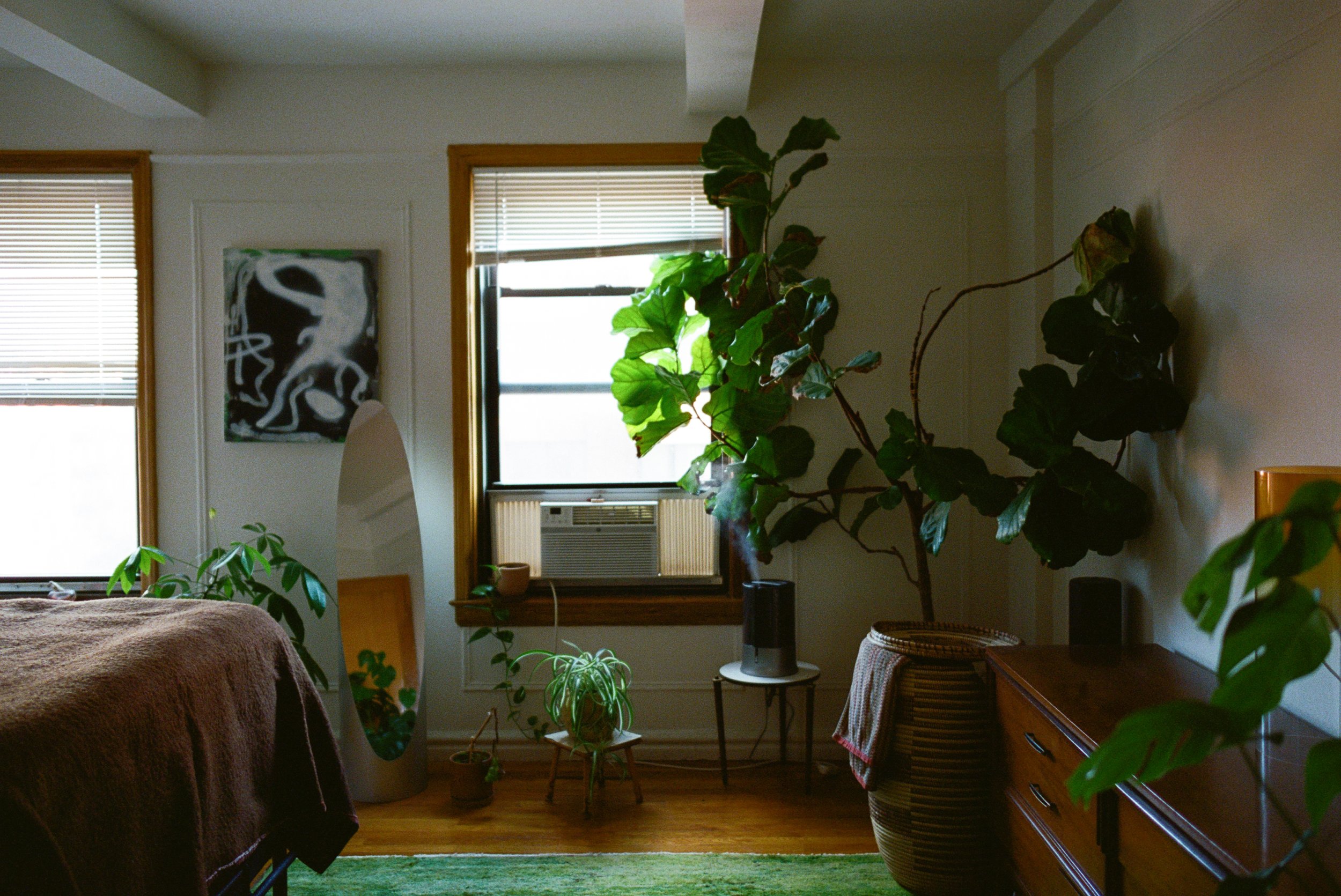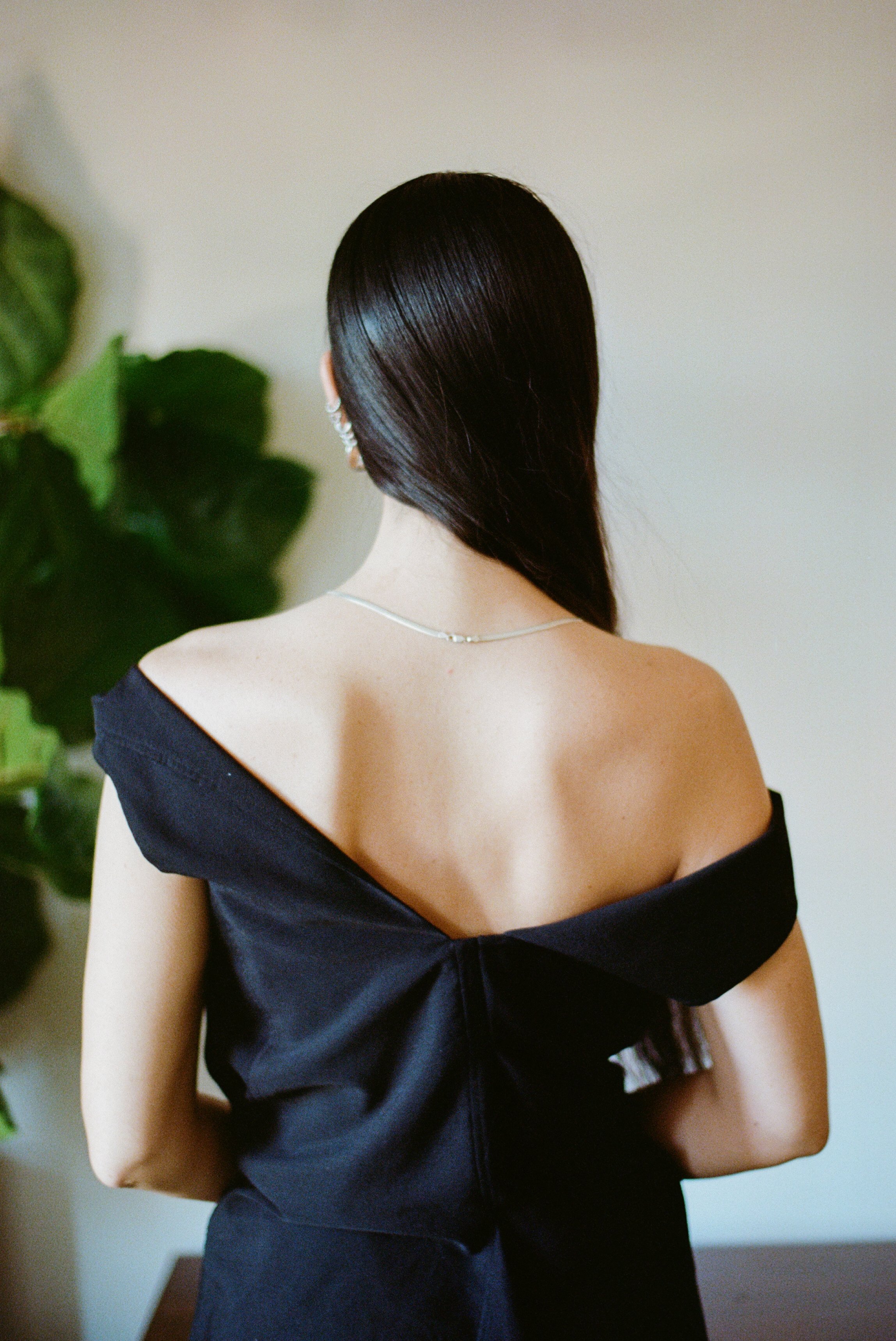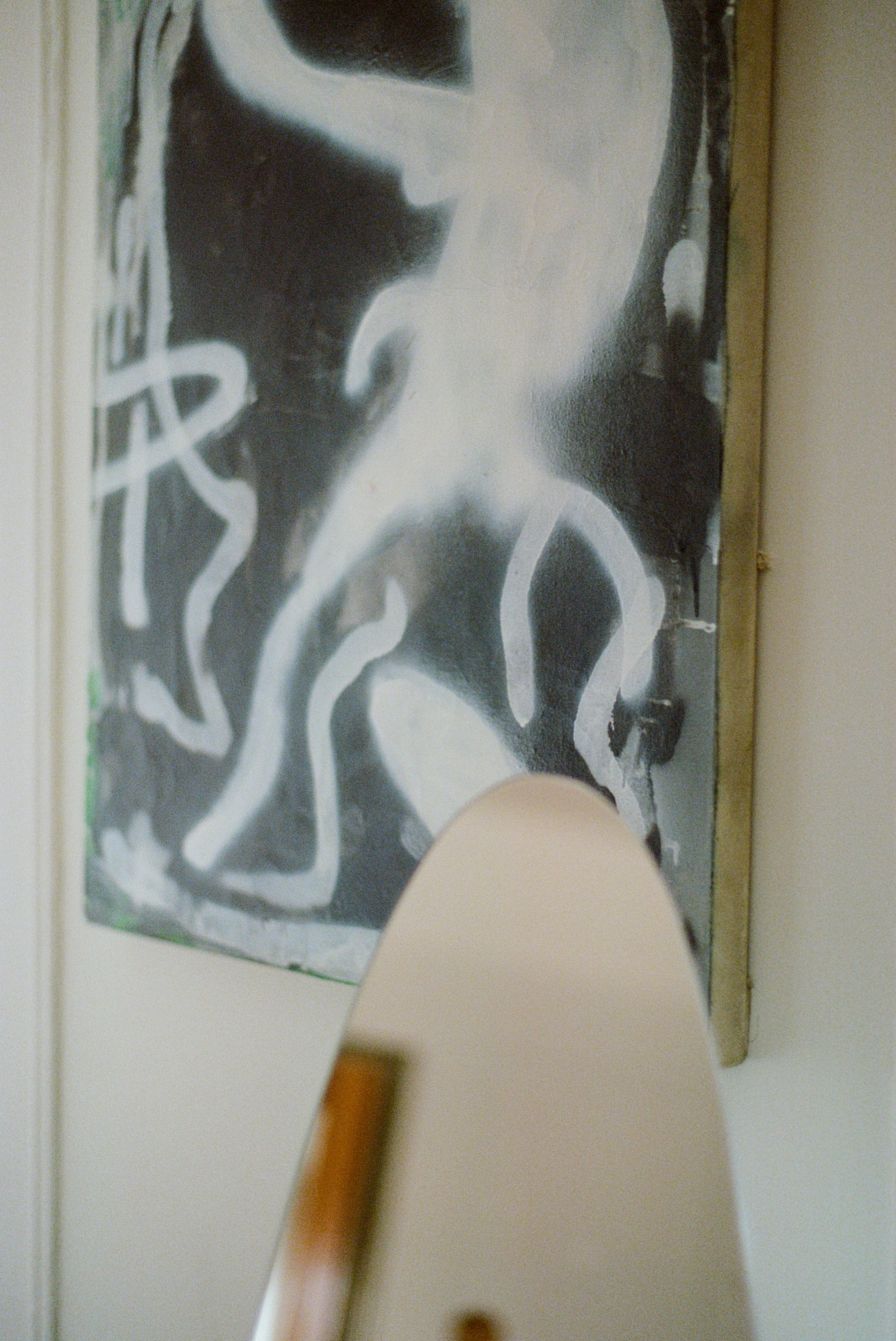Costume designer Miyako Bellizzi, the brain behind the character-defining looks for movies like Uncut Gems, Good Time, or HBO’s hit show Scenes from a Marriage, sees her role as “cultural anthropologist with a specialization in clothing.” Born in the Bay Area, Miyako moved to NYC 15 years ago to embark on a multi-faceted career across film, tv, editorial, and print that is marked by patience and her DIY attitude. When she isn’t away from the city for work (which happens more than she’d like), Miyako can usually be spotted hunting for inspiration on an early morning stroll in her Lower East Side neighborhood, or reading at home during a precious moment of relaxation. Below, we speak to the fashion maven about growing up in a family of stylish women, her research process, and home-made beauty remedies.
♫ Listen to miyako’s playlist | ⌨ miyako’s last google search
on her morning routine
I’ve been trying to be mindful of not spending too much time on my phone when I first wake up. I find it can affect the rest of my day if I start by looking at the news or messages I missed the night before (this reminds me that I still need to find an alarm clock). I typically like to start the morning with some stretching that turns into a 30 minute Youtube pilates class I’ve been enjoying lately. I love the feeling of waking up my body and being able to think about what my plan is for that day while I’m on the mat. After I’m a bit warmed up, I like to shower and make coffee with Colombian Espresso from Porto Rico Importing Co. while I’m getting ready for the day. Since my schedule can be so different from day to day I like to at least wake up early enough to stretch and do a little work out no matter if I’m in a hotel room or my bedroom. It really sets the tone for the rest of the day.
on her Bay Area upbringing and how it shaped her sense of style
I feel as though I had a unique and culturally rich upbringing being raised in the Bay Area. What I found most interesting was the combination of all the different types of people I was exposed to on a daily basis and how that has influenced my sense of style and how I still view other people’s style today. I saw individuality, subcultures, hood culture, artists, hippies, you name it — all on a daily basis on the city bus ride to school. I think that's where my love of characters began.
At home, however, I was raised by a single Japanese mother. In our culture, how you present yourself in the world is extremely important. I was never allowed out of the house without being fully presentable, that’s where my love of personal style comes from. The Japanese women in my family were and are very stylish and always put together, something I learned to look up to and strive to be like. Both my mother and grandmother played a huge part in who I am today in my career.
““I learned to sew from patterns with my grandmother as a kid and always enjoyed it, but never thought I would use that toward my career. We were very close and I loved trying on her old clothes — that was my introduction to vintage. Then, at art class in high school, my teacher gave me an assignment of using old fashion magazines to create something. That’s when I started making collages with magazine images and my own drawings. It was these projects that really opened my eyes to wanting to work in the industry.””
on college and her formative early internships
I transferred to FIT from another college, so only spent a few years there. I was an advertising and marketing major and very quickly realized that wasn't for me. But I was at a point where I had already moved to NYC, transferred schools twice and really wanted to focus on my career and being in the city. So I decided to stick it out, get internships at places I really wanted to learn from and work during the day. My first internship was a highly influential one that I will never forget. I worked in the closet at Details Magazine, a mens fashion magazine that I loved. It was there I learned so much about the industry, mens fashion, how to tie a tie, and how it all worked. I will always cherish that first internship. From there, I interned at a few other places, then moved to The New York Times fashion desk, another internship that I loved and ended up turning into a freelance job. I was freelancing more and assisting anyone I could just for the experience. I was extremely hungry and loved staying busy. At first, I got internships through school, but quickly I started getting other opportunities through word of mouth.
on her start in the film industry & work ethic
I learned, assisted and worked in fashion for the first 5-6 years in NYC before pivoting to film. I was asked if I could work on a film and said yes despite the fact that I had no idea what I was doing. I committed to my first feature and figured it out along the way. There was no budget and I used all my own clothes, asked all the actors to bring their own, too, and we figured it out on set. I had a very DIY approach that I still use to this day. From there, I worked on four films in a row, back to back. Something I could never do again. I’m someone who has always kept my head down and focused on my work. It took me a lot longer to gain success, but I’m okay with that because I really allowed myself to create a strong foundation and explore different areas of my career to be well rounded rather than chasing notoriety. To me, it's always been about learning and working towards being the best version of myself in a creative way. “Successful” is still a foreign term to me. I’d like to say that after 15 years of hard work I’m finally at a place where I’m comfortable — but I’m always striving to be better and learn more.
““I’m in my career driven life now, working to build for the future I want. I’m finally in a place where I live in a beautiful home, can pay my rent every month, can afford to eat out every night, and buy nice things. It’s fabulous. I wouldn’t trade this life for the world right now.””
on working in film vs. editorial
The biggest difference between working on features vs. editorial is the amount of prep and planning that takes place. Character development takes a long time and there's a whole dating process that happens before deciding on a film. It feels like I have to make the decision after reading someone’s script and getting coffee once, which is not an easy feat when that means being with them for 12+ hours a day for the next 4-9 months. Because of this depth, I like the film process much more.
A common assumption about costume designers is that we create every garment in the film, which isn't true. Depending on the film, there's a different percentage of what’s created for characters vs. what’s bought and styled. Another assumption is that we do everything single-handedly, which we do not. The films I work on now are very much a team effort, and everyone plays an important role in building our department. Typically I have about 15 people on my team at one given time.
on finding a work-life balance and pivoting between industries
I pour my whole heart into the work I do, and it sucks my energy from anything or anyone else in my life. It's a sacrifice for sure, and sometimes means I can’t see family or friends for 3-4 months at a time when I’m working 80+ hours 7 days a week. Because of this, I’ve come to the realization that I want to live a somewhat “normal” life that most full-time film costume designers I know do not. So I split my time between smaller term commercial and styling work. I love what I do in film, but I treat it like a special project, not a job I have to do for money. I’m very lucky that I have this situation, as I know most people in my industry don’t. This goes back to what I mentioned earlier about being well rounded and having different skills so that I’m never stuck to one thing. I love being able to change it up, working on a film then taking a break while I focus on my other interests. It's very rare in my career to be able to do both, and feel extremely lucky that I’m able to pivot back and forth between industries.
““Be yourself, never try to follow in another’s footsteps, and never give up on your goals. Always strive to work on projects that bring you joy and you’ll attract work that will be fulfilling. Educate and inspire yourself daily. Find your people and work on anything that comes your way, even if the pay isn’t great. You never know who you will meet along the way. Stay positive and smile at work, people will always remember a good attitude.””
on her creative process
Every film has a slightly different process, which keeps it interesting! I like to start by reading a script for the first time front to back and begin visualizing the world. It’s not until the second time around that I start taking notes. Then I gather reference images and really get into the research aspect. This is my favorite part of the process and the most creative. It's where I can dream and really start thinking of ideas per character. Research can be as simple as going for a walk and looking at people in different environments. It can be going into the homes of people who inspire the character and taking a look at what's in their closet, but it could also be more traditional like going to the library. It’s also at this point I like to have conversations with the director and exchange ideas.
Then I start understanding the logistical elements of the process, meaning my budget and how I’m going to allocate it. This is where being resourceful comes in handy because we always have to figure out how to create hundreds if not thousands of costumes with the budget we have. I’m also starting to gather my team and once I have an understanding of casting, I start building my relationship with the actors. They play a huge role in this collaboration and I like to start the fitting process early to build trust and talk ideas, especially if we haven’t worked together before. There are always costume changes, even on set. The shooting months are a time of constant shopping, building, returning, fittings, and planning of looks. As far as sourcing the clothing, it all depends on what the film is about, when it’s set, and the psyche of the character. We’ll go shopping at the places they would go, with the type of money they make in their budget, not mine. Reality within a character is the hardest challenge. Our role as costume designers isn't about creating beautiful, cool outfits, it's about being real and staying true to what the character would actually wear.
““I like to think of myself as a cultural anthropologist with a specialization in clothing. My approach is learning about the specific demographic for each film on a scientific level. I’m really interested in why people wear what they do and how they like to be perceived in the world. Everyone needs to put on clothing everyday, so figuring out why they choose to protect themselves in these particular garments fascinates me.””
on what inspires her
I’m inspired by the world around me and find so much of this life to be interesting. I love people and love learning about them. I love that I can walk outside my door and be inspired by someone walking down the street. Photography in general and street photography in particular is a great source of inspiration. Some of my favorite photographers are Mary Ellen Mark, Bruce Gildan, Diane Arbus, Robert Frank, Weegee, Joel Meyerowitz, William Klein, Brassai, the list is endless. If I’m feeling down, I can always pick up a photo book and feel inspired by the characters in it. I also look up to women who have been able to find their voice in life and are able to express it visually or creatively in their career while also maintaining a home and social life.
on what she’s reading
Right now I’m reading James Baldwin’s Another Country, which is a great story. I also love Cookie Mueller and highly recommend reading about her wild life. She really takes you to another world and it's hard to put down. Another favorite book of mine that I read in a day was Astragal, another story based on its author’s life, Albertine Sarrazan, about escaping prison and her journey through life in Paris in the 40’s. More favorites include Soul to Soul by Yelena Khanga and Once in Harlem by Katsu Naito (a beautiful photo book about Harlem’s 1990s immigrants). Speed Tribes is a book I initially read for research on a film and loved it so much that it's turned into one of my favorites. The author is an American Happa who moved to Japan in the early 90’s to work as a reporter, but became so enthralled with the young bike gang culture in Tokyo that he started writing about the lives of certain characters he met. It speaks about a highly stylized, influential time in Tokyo that's fascinating to learn about.
““There’s an older woman in the neighborhood I see often who feels like a kindred spirit. She walks around in an oversize black leather jacket, oversize black sunglasses, a ball cap with her long white hair underneath. She’s always carrying a black portable radio in her hand and I’m captivated by hearing the sound of the news linger while she walks alongside me on the street. I’m not sure what I’d say if I approached her, and not sure if I ever need to. Her presence is ingrained in my mind. One day I’ll take a photo of her and ask her name.””
on her personal style
I don’t like to be categorized, so my intention in the way I dress is to be confusing by mixing different silhouettes, eras, and genres. I’m typically dressed in 90s era menswear with feminine 40s blazers or 50s cashmere sweaters. I’ve been into more feminine elements like skirts and dresses lately, so I’d pair them with a masculine shoe or mens sweater top for balance. 90% of my wardrobe is vintage. I’m an eBay girl who loves a deal, so you’ll often find me in an online auction looking for an obscure Comme of Yohji piece that I’m haggling. My current phase is the culmination of bare makeup while wearing all black. I’ve been having a hard time seeing myself in color in NYC. It will come back into my life when I’m ready for it, but something about being bare like a blank canvas as an intermission of what my next style expression and evolution will be feels great.
on her beauty routine
I love to take care of my skin and learn about products. I try to keep it as simple and clean as I can and I’ve realized that as I’ve been caring for my skin more, I’ve been wearing less makeup. I do a deep clean at night, but usually just splash my face with cold water when I wake up. I’m really into the SkinCeuticals C E Ferulic serum that I use every morning with a moisturizer and SPF. At night, I cleanse with the Biologique Recherche Lait U, follow with the P50 toner and an Emma Lewisham Supernatural face cream (great for helping from drying out my skin with harsh weather and travel). My makeup routine is very simple. I don’t leave my house without curling my lashes, brushing my brows and putting on a lip. My hair routine is also very low maintenance, which is why it stays so healthy. I wash it about once a week, but on the 6th day or so I oil my scalp and ends with an oil I make. I’ve been trying rosemary oil lately, but usually it's a mixture of castor oil, argan oil, tea tree, lavender, peppermint, and eucalyptus. It varies from season to season, and I make different concoctions for my hair and my body.
miyako’s favorite spots in nyc
Coffee: Porto Rico Coffee on St. Marks
Breakfast: Barney’s Greengrass
Coney Island in the Summer
images and interview by clémence polès

